When Animals Go Mad
Laurel Braitman, Animal Madness
 Can our pets suffer from the same psychological illnesses as humans? How did Prozac find its way into veterinarian's offices? What good is anthropomorphizing? Laurel Braitman has answers to these burning questions in her new book, Animal Madness.
Can our pets suffer from the same psychological illnesses as humans? How did Prozac find its way into veterinarian's offices? What good is anthropomorphizing? Laurel Braitman has answers to these burning questions in her new book, Animal Madness.
It all started about 10 years ago when Laurel adopted a Bernese Mountain dog. He was a rescue and for the first six months he was a dream dog. But then he developed debilitating separation anxiety and a number of other problems. Her vet ended up putting him on Valium and Prozac, which shocked Laurel. She had never heard of dogs being put on these types of meds.
Laurel then decided to try to get to the bottom of it. Particularly, how did these drugs get into out veterinary clinics and why? Also, do they work the same way in animals as they do in us?
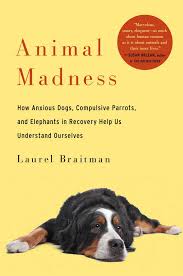 So what would cause a dog to have problems after six months? Laurel talked with many child psychologists and found out that this is a fairly common thing. A lot of us when we have a disruptive life event, we are sort of on our best behaviors for a while. Not until we feel more comfortable does our anxiety begin to surface. She feels that her dog started feeling more comfortable with her, which might have made his symptoms manifest about six months in.
So what would cause a dog to have problems after six months? Laurel talked with many child psychologists and found out that this is a fairly common thing. A lot of us when we have a disruptive life event, we are sort of on our best behaviors for a while. Not until we feel more comfortable does our anxiety begin to surface. She feels that her dog started feeling more comfortable with her, which might have made his symptoms manifest about six months in.
Just like in people, Laurel has found out that that these medications don't work on all animals the same. It depends on the animal. There is not a one-size-fits-all.
Laurel feels that both animals and humans suffer from similar forms of mental illness. Some of the most common mental problems in humans stem from fear and anxiety (after addiction). Fear and anxiety is something we share with most of the animal kingdom. It is helpful and keeps us from danger. The problem is when we feel fear and anxiety in situations that don't call for it and it keeps us from leading a happy normal life. This also true in mammals, birds and even some invertebrates.
According to Laurel, she doesn't feel we should use antipsychotics on, for example, unhappy zoo animals to medicate them into compliance in a situation that they shouldn't be in. The use of these medications should be used as a last resort, and depending upon the situation, should also be used with other forms of coping.
It is important to early exposure and socialization of puppies and kittens when they're young. It isn't always that these behaviors develop later; we just don't provide them with the tools to cope with noises and new things when they are young, which can manifest as anxieties when they're older.
You need to identify with your animal and realizing what their version of normal is. This can help you understand when there is a change in their behavior.
Visit website
"HERO PERSON OF THE WEEK" - Linda Spurlin-Dominik, Guardian Angels For Soldiers
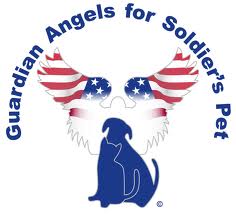 Our new segment celebrating those that do good for the animals is getting high-acclaims. This week we're spotlighting Linda Spurlin-Dominik. She is one of the founders of Guardian Angels For Soldier's Pets.
Our new segment celebrating those that do good for the animals is getting high-acclaims. This week we're spotlighting Linda Spurlin-Dominik. She is one of the founders of Guardian Angels For Soldier's Pets.
The primary purpose of Guardian Angels For Soldier's Pets is helping deploying military service members who are going into combat areas or on peace keeping or humanitarian type missions, care for their pets while they are gone.
One of their programs is their foster home program. They have over 3,100 individuals or families all over the country that have registered with them to care for these pets. The time the animals are in foster care can be anywhere from three months to a year. They also have a military pet assistance fund, which helps homeless veterans with their pets to make sure the pets are current on shots and microchipped.
All domestic animals are accepted into their programs. This includes dogs, cats, rabbits, horses, snakes, guinea pigs and gerbils.
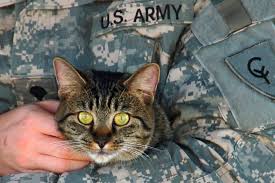 While there is no charge for their service, the actual cost of caring for the animals in a foster home is the responsibility of the actual pet owner.
While there is no charge for their service, the actual cost of caring for the animals in a foster home is the responsibility of the actual pet owner.
But what happens when someone unfortunately doesn't return from deployment and pays the ultimate sacrifice? Fortunately, this hasn't happened yet to the Guardian Angels For Soldier's Pets. But if something did happen, then a commander of the unit has their contact information.
Currently, they have about 33 animals in their care. This is about 2/3 less than they normally have, because deployments are down.
Visit Website
Pet Food Myths
Dr. Marty Becker, America's Veterinarian
 With our pet-store shelves stocked to the ceiling with a confusing array of pet-foods, does it really make a difference if you feed your dog something cheap off the shelves of Wal-Mart? You might be surprised at the answer. Animal Radio® Veterinary Correspondent Dr. Marty Becker reveals the truth behind pet-foods.
With our pet-store shelves stocked to the ceiling with a confusing array of pet-foods, does it really make a difference if you feed your dog something cheap off the shelves of Wal-Mart? You might be surprised at the answer. Animal Radio® Veterinary Correspondent Dr. Marty Becker reveals the truth behind pet-foods.
When Dr. Becker graduated from veterinary school back in the 80's, they learned some things about nutritionally balanced pet foods. Some of these things have never changed, but it is important that your pet's diet contains everything your pet needs. Cats need 48 essential nutrients, while dogs only need 44 essential nutrients.
This means you can feed cat food to your dog if you want. Sometimes cat food is recommended for older dogs who have lost their appetites. They will do just fine on this food, but they will probably gain weight.
However, you can't feed dog food to a cat. They need a special amino acid called taurine that is not in dog food. Cats can actually go blind if they don't get this in their diet.
Dr. Becker tells us that he remembers when the pet food section in a regular sized grocery store was 8 feet long. Then it went up to 16 feet. Now, it covers both sides of the aisles. But what about the actual pet food stores? The selection is overwhelming.
They are now even foods that are $20 a pound for kibble, which comes to $160.00 for an 8-pound bag of dog food. The beautiful packaging of perhaps a wolf on the bag can also sway people.
Sometimes pet stores will even have a sales representative from a food company in the store. They will ask you to put their food to the test with your dog, to try to get you to switch to a higher priced food.
Dr. Becker feels that people will spend this extra money on food, but that there are better ways, less wasteful, to look after their pets health. He mentions a recent article done with six veterinary nutritionists at veterinary colleges (you are not going to get much more authentic than that!) and not a single one out of the six had ever seen a case of nutritional deficiency come into their hospitals. What this means is that there are millions of cats and dogs that are successfully fed diets that some people would turn their nose up at and not buy for their pets.
 Surprisingly, Dr. Becker has fed his pets commercial food all of their lives. He has two seventeen-year-old cats that are healthy and have never been to the vet, and a fourteen-year-old healthy Golden Retriever who has also never been to the vet.
Surprisingly, Dr. Becker has fed his pets commercial food all of their lives. He has two seventeen-year-old cats that are healthy and have never been to the vet, and a fourteen-year-old healthy Golden Retriever who has also never been to the vet.
Don't think you have to spend this incredible amount of money to feed your pet to help its health, because it's not going to work. Also, you don't have to stay away from corn or wheat or keep your pet on a grain free diet. These grain free diets are just substituting one carbohydrate source for another one.
If your pet's diet is complete, which means it contains all of the necessary nutrients; if its balanced, which means it contains the nutrients in the proper proportions; if it's tasty, which is palatable for your pet; and it's safe to eat, you can feed your pet a food that is only $2 a pound, and most of them are going to do just fine.
You also want to look for the AAFCO (The Association of American Feed Control Officials) stamp. If it's on the package, the food is okay to feed.
Of course, if you want to, you can cook for your own pets, it's just not as easy as you might think. While the experts hadn't seen any nutritional deficiencies, all of them have seen many cases of nutritional excess. If you are going to do this, talk with your vet for a recommendation of a particular book or a place you can go to online to help you create a special diet.
But what about dry food being better than wet food to help keep their teeth clean? Dr. Becker says it's not true. These are both the same. Semi-moist does, however, cause an increase in tartar. High protein diets do not cause kidney disease. And just feeding lamb and rice diets don't prevent allergies.
Allergies that manifest themselves in your pet's skins aren't always caused by foods. There are also environmental allergies you need to take into consideration. So, no amount of any special food is going to get rid of the problem, you need to see your veterinarian. There is a new drug out called Apoquel, which works like a miracle to stop the chewing, biting, scratching and itching.
Dr. Becker recommends feeding your pet a commercial dry food, which should be placed in a treat-dispensing puzzle to get our pet to work for their food. Along with feeding their bodies, this will feed their minds.
Dr. Becker has been practicing veterinary medicine for more than 30 years and is a best-selling author, syndicated columnist and a frequent guest on national shows.
Visit Website
 Dizzy Old Dogs - Diagnosing Idiopathic Vestibular Disease -Dr. Debbie
Dizzy Old Dogs - Diagnosing Idiopathic Vestibular Disease -Dr. Debbie
I came running when I heard the crashing paw steps of my 12 year old Labrador, Magnum as he flopped and tumbled in a nervous frenzy. With head crooked to the right, Magnum's dizzy, wobbly movements resembled a carnival lover's exit from the tilt-a-whirl ride. His eyes darted back in forth in an uncontrollable movement. Many might assume Magnum suffered a stroke, and figured it was time to put the old guy to sleep. But fortunately there was hope - Magnum developed a typical case of Idiopathic Vestibular Disease.
What is Idiopathic Vestibular Disease?
Idiopathic Vestibular Disease, also known as Old Dog Vestibular Disease, is a condition commonly diagnosed in senior dogs, but also seen in cats. The term idiopathic basically means the cause is unknown. This condition affects the vestibular system and the pet's sense of balance, typically with a rapid onset of symptoms. In Magnum's case he literally was fine at the start of a television program, and was wobbly just one hour later.
Symptoms of Old Dog Vestibular Syndrome include a wobbly gait, head tilt, anxiety, panting, and an abnormal eye movement called nystagmus, a condition in which the eyes dart rapidly back-and-forth or up-and-down. In addition to mobility problems, the topsy-turvy sensation leads to nausea, vomiting, and an inability to eat or drink. Thankfully my sturdy stomached Labrador barely missed a meal during his bout.
The cause of idiopathic vestibular vestibular syndrome isn't completely known, but fortunately most dogs recovery from symptoms within 2 to 4 weeks. In some cases dogs may suffer from future bouts months to years later. Some dogs may retain a slight head tilt or unsteadiness at times.
What Can Be Done?
A veterinary examination is important to identify suspected cases of vestibular disease. Other possible causes of these symptoms could include an infectious or inflammatory condition, inner ear infection, cancer, or a brain vascular episode - a stroke-like episode. In order to rule out these potential causes, more detailed testing is needed and may include tests like a CT, MRI, and CSF tap.
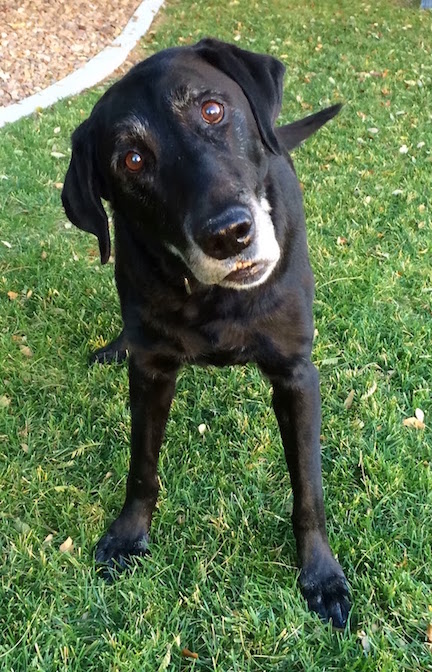 There isn't a cure for a vestibular episode, and some pets recover without any treatment. But other animals require supportive care including anti-nausea medications, intravenous fluid therapy, hand feeding, and physical assistance to walk and protect from household hazards.
There isn't a cure for a vestibular episode, and some pets recover without any treatment. But other animals require supportive care including anti-nausea medications, intravenous fluid therapy, hand feeding, and physical assistance to walk and protect from household hazards.
Caring for a frightened, disoriented, wobbly, nauseated dog can be difficult. My 80 pound Labrador needed physical support to get up, walk outside and required hand feeding at times. He couldn't be left home alone without risk of injury. And because of all the hoisting, blocking collisions with furniture, and guiding away from the depths of the pool, I injured my back during his rehab time. The reality is that home care of a small or toy breed with vestibular disease is much easier than the physical demands of a assisting a large or giant breed dog.
Lessons Learned
I have seen many a patient come to my veterinary office for euthanasia after developing similar vestibular symptoms. Some pet owners assume that the severe symptoms and rapid onset mean that there is no hope and euthanasia is the only choice. I'll admit that vestibular symptoms are scary and affected pets are tough to care for at home, but if given the tincture of time, many senior dogs will eventually improve. Perhaps Magnum's story will help other pet owner's opt to pursue treatment or testing, and give time a chance to heal.
Four weeks later and Magnum is back to playing with toys and energetically bounding on walks. He still retains a slight head tilt to the right, his badge of courage as I see it. I'm thankful for his recovery and adore his charming, lovable tilted perspective of the world.
Featured veterinarian known as "Dr. Debbie" on national pet radio program, Animal Radio. Ebook author of "Yorkshire Terriers: How to Be Your Dog's Best Friend"; "Pugs: How to Be Your Dog's Best Friend"; "Mini Schnauzers: How to Be Your Dog's Best Friend"; and "Shih Tzu: How to Be Your Dog's Best Friend." Dr. Debbie's books.
Visit Website
The Dogfather's Grooming Tip with Joey Villani
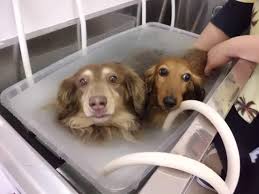 Adding Fatty Acids For Dry Skin
Adding Fatty Acids For Dry Skin
People like to add fatty acids, such as fish oil, to their pet's food. They think by doing this, they can eliminate dry skin and dandruff. While in some cases it will, in most cases it won't!
In most cases you're adding excess oil that will clog the pores of their skin, because if the dog isn't using all of the oil, it has to be released somehow. It can come out in two different ways. One way is that it will come out in the stool and the other way is that it will come out through their skin.
There is a big misconception that dog's don't have skin pores; they do, they just don't sweat through them.
Joey tells us about a Microbubble Wash System that is used on dogs with skin allergies. The machine actually breaks the water molecules down, smaller than they normally are, enabling it to get down to the skin and clean everything out. This is a great way to remove those fatty acids that are clogging their skin. Unfortunately, this is new technology and most veterinarians and groomers do not have the machine, which can cost around $8,000.00.
So, the best thing to do is to start eliminating the fatty acids and you will see a healthier skin and coat.
Animal Radio® News with Tammy Trujillo
 Will Ferrets Become Legal In NYC?
Will Ferrets Become Legal In NYC?
We start with a Ferret Fact: The Centers for Disease Control describes ferrets as docile and catlike. But that being said, right now there are four places in the U.S. where it is illegal to own a ferret: the states of California and Hawaii along with Washington DC and in all five Burroughs of New York City (they are legal in the rest of the state). But New York and the de Blasio administration are considering overturning the 15-year-old ban. New York's Health Department has said ferrets pose no serious risk to the public. There will now be a series of public hearings and a comment period before the full Board of Health votes in September. Then it is up to New York Mayor de Blasio. He says he is not advocating overturning the ban but is willing to consider it if the board sees no problems. Overall, the city is basically split, 39 percent are pro-ferret and 42 percent are against.
Do Cats Get Heartworm Disease?
When you hear about heartworms, you automatically think about dogs. But news out of Texas A&M University says that although cats are less susceptible to heartworm infection, they still can get the disease. Heartworm disease is transmitted to an animal through the bite of a mosquito carrying the heartworm larvae, which eventually settle into the blood vessels of the lungs or within the heart itself. Heartworm infection in cats is harder to diagnose than in dogs and there are no specific tests yet as there are with dogs. Signs associated the first stage of heartworm disease are often misdiagnosed as asthma or allergic bronchitis, when in fact they are actually due to a syndrome newly defined as Heartworm Associated Respiratory Disease (HARD). There are also no products in the United States approved yet for the treatment of feline heartworm infection. There are four preventative products available, but just as in dogs, it is imperative to make sure the cat does not already have heartworms.
 Dog Breeds That Are Falling Out Of Fashion
Dog Breeds That Are Falling Out Of Fashion
There are several breeds of dogs that are falling out of fashion it seems. VetStreet looked through its database of thousands of pet records and found 10 breeds that were really popular 10 years ago but aren't so much today. Some of them are really surprising. The breed losing favor the fastest is the Greyhound. Some of the others are surprising too, like the perennial firehouse dog, the Dalmation and the Carin Terrier, which was the breed of Dorothy's dog Toto in the Wizardof Oz. Also on the list, the Smooth Fox Terrier, all the Spitz Breeds, The Schipperke, Chow Chow, the Samoyed, Keeshonds, English Cocker Spaniels and the Silky Terrier.
Nursing Home For Elderly Dogs
A Japanese pet company is opening a nursing home for elderly dogs. The Aeonpet facility provides round-the-clock veterinary care, a specialist gym and a swimming pool. It also has a large grooming room and owners are able to stay with their animals as they live out the last of their days in luxury. The president of Aeonpet said he intends to use the first dog retirement home to hone the company's skills and to "establish an industry standard." Aeonpet is already the largest specialty pet company in Japan. In the past few years, health services in Japan have improved and just last year new laws went into effect that make it a legal obligation for pet owners to take care of their animals until they die.
Quick, Two Questions For You: Do You Know Where Your Smartphone Is? Do You Know Where Your Puppy Is?
Some 28-million Americans say they have had at least one of their digital devices destroyed by a pet. That's according to a new survey from Square Trade. Four out of 10 say their pets gnawed through the power cord. One in three says their pet chewed their phone to pieces or did something else to make it unusable. Canines were the leading culprits, with puppies three times more likely to do the deed. In one out of four cases, the pets did the damage while the person was still using the device.
 Listen to the entire Podcast of this show (#1079)
Listen to the entire Podcast of this show (#1079)





